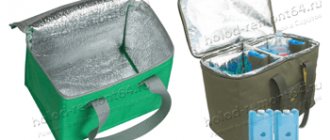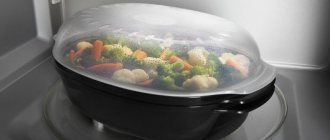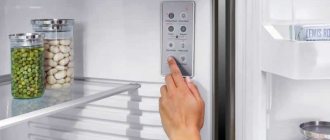When you want to maintain the usual comfort and freshness of your favorite products on the road, a thermal bag will help out. Such devices are not tied to an electrical outlet and are much lighter than their kitchen counterparts, which is why they are unreliable and capricious. Before you load up your perishables, it's a good idea to figure out how to use your cooler bag so that the inside is actually noticeably cooler than the outside. It is also important to find out how the temporary refrigerator works in order to use it for its intended purpose and avoid disappointment.
Product Features
A cooler bag is usually a container with carrying handles designed to hold refrigerated foods. It can be made in a fabric case with additional compartments and pockets, sometimes with a shoulder strap in the format of a backpack or plastic box. Using the device involves both positive and negative aspects.
So, when traveling, a cooler bag will allow you to:
- take perishable foods with you;
- have cold drinks on hand;
- protect things from grease and food odors.
But when planning a trip, it is important to consider the disadvantages of portable refrigerators:
- extra weight;
- takes up more space as luggage than a regular bag;
- The time for keeping the cold inside is limited.
However, all these disadvantages can be negated if you choose the right type and model of thermal bag, taking into account the intended conditions of use. If we talk about the principle of operation of the device, everything is simple. To maintain low temperatures in portable thermal bags, use:
- heat-insulating filler;
- cold accumulators;
- active cooling.
Each of the listed solutions is selected by the user depending on the task assigned to him and the specific type of accessory.
An insulated cooler bag works like a regular fur coat or blanket. Its walls are made of a thick layer of foam or other insulating material that protects the cold contents from the warm environment. The lining is usually made of reflective fabric, which also reduces heat loss. This principle of operation of the cooler bag will ensure cold storage for two to seven hours, no more.
An insulated bag is not intended for long-term cooling of products. This is not a real refrigerator. It does not generate cold, but only protects the contents from heating.
A more effective scheme is using cold accumulators (cold cells), when the walls of the device are lined with containers with chilled or frozen liquid. How long a cooler bag keeps cold depends on how quickly the cold elements heat up. Cold accumulators can be used with any thermal bag, even if this is not provided by the manufacturer.
Devices that can not only retain cold, but also produce it, necessarily consume electricity. If the cooler bag uses a car battery as a power source, you need to make sure that it does not run out. To avoid such troubles, some models only operate when the engine is on, so they may defrost during long-term parking.
The most commonly used thermoelectric and compressor portable refrigerators. The first ones use Peltier elements to cool products 15-30 °C below ambient temperature. They may have an LCD display, an audible alarm, even a built-in temperature recorder. This cooler bag weighs 3-5 kg, runs on battery power for several hours, so it is useful not only for motorists.
A Peltier element is a plate that, when electricity passes through itself, heats up on one side and cools on the other.
Heavy and bulky compressor models rarely come in a bag format. They weigh from 10 kg and do not tolerate being turned over, so they are most often used in spacious cars and yachts.
How does a cooler bag work?
The operating principle of the cooler bag is very simple. It consists of the following:
- Warm or frozen foods are placed inside the product.
- Close the thermal bag hermetically with a clasp.
- Over the next few hours, try to open the product as little as possible.
As long as outside air does not enter the thermal bag, the temperature inside changes very slowly.
How long does a cooler bag keep cold?
The performance of a cooler bag depends on several factors. The volume of the product, the degree of tightness and the thickness of the insulating layer must be taken into account. A high-quality device can maintain a low temperature inside for up to three hours.
If you use a cooler bag together with a purchased or homemade cold battery, the period will increase to 6-24 hours. Food will stay frozen the longest if you equip the device with several batteries at once.
The insulating layer of the cooler bag must be at least 8 mm thick
What temperature does the cooler bag keep?
If the thermal bag is made of dense material and equipped with a reliable clasp, then even without cold accumulators it will be able to keep the temperature 15 degrees lower than outside. But this will last no more than 3-4 hours. Then the food will still heat up, especially if the lid is opened frequently.
When using cold storage batteries, you can achieve a temperature reduction of 20-25 °C compared to the environment. If there are enough batteries, the food will remain deep frozen for 12 hours to a day.
Attention! You can make a battery for a cooler bag with your own hands. To do this, a saline solution is poured into a plastic bottle and frozen at -15 ° C overnight.
General operating rules
Whatever the internal structure of the cooler bag, its main drawback is its inability to maintain a stable temperature. Warmth slowly seeps inside. Even a thermoelectric refrigerator capable of active cooling has a hard time coping with the heat. Therefore, you have to constantly think about how to keep your cooler bag cold.
A few simple rules will help you increase the useful life of your device:
- open the bag only when necessary;
- close as quickly as possible;
- tightly surrounded by other luggage;
- use every opportunity for additional thermal insulation (put a jacket or blanket on top);
- load only chilled and frozen foods inside;
- do not leave the device in the sun;
- Always check that the lid is tightly closed.
Before using a thermal bag, you need to cool it for several hours: put the isothermal bag in the refrigerator, plug the thermoelectric bag into the network and let it work, freeze the cold elements.
The larger the volume of the internal space, the longer the low temperature inside the container will remain, especially if it is fully loaded with chilled products or cold packs.
The bag must be tightly closed
Don't leave in the sun for long
Open only when necessary
Load food chilled
Use depending on the type of bag
To choose the ideal way to keep cool for a particular case and decide how to use different types of cooler bags, it is important to compare their basic user properties.
| Model | Typical volume, l | Typical weight, kg | Temperature retention time, h | Network connection | Scope of application |
| Isothermal with thermal insulation | From 1.5 to 60 | Less than 1 | From 2 to 7 | Not required | Picnic, short trip, day hike. |
| With cold accumulators | From 3 to 100 | From 2 to 10 (1 cold accumulator – from 200 g) | From 8 to 48 | Not required | Hiking for weekends, short trips, transporting food and medicine |
| Thermoelectric | From 3 to 30 | From 3 to 5 | Unlimited (requires several hours to cool down) | 12/24/220 V (built-in battery, vehicle network, fixed network) | Long journeys, transportation of food and medicines for which a decrease in temperature is critical and will lead to spoilage |
| Compressor mini refrigerator | From 10 to 60 | From 10 to 20 | Not limited | 12/24/220 V (car battery, landline network) | Traveling by car and yacht |
It is worth considering in more detail universal options that are not tied to the vehicle.
With cold batteries - for short trips and walking
Compressor mini-fridge - for long trips
Isothermal - for picnics and short trips
Thermoelectric - for long trips
Thermos bags
Considering what an insulated bag is, it can also be used as a large thermos: if you load warm foods inside, they will not cool down for a long time. You can take both cold and hot dishes with you in such a bag to a country picnic, on a train (unless it’s a trip from Moscow to Vladivostok), or to work. A simplified version of the design - a thermal package - has a very thin thermal insulation layer (0.3-0.8 mm). Such a primitive refrigerator can be used as a bag for delivering frozen food from the store, but nothing more.
Cold accumulators
If you line all the inner surfaces of the bag with cold packs, it can stay cold for a day or two. This is enough for a weekend trip or a short hike. You can calculate in advance how many cold accumulators you need for your cooler bag to achieve maximum effect. Let’s say the depth of the internal space of the container is 25 cm, the width and length are 30 cm, and you need to lay cold elements measuring 9 x 19 x 2 cm. In this case, the diagram will be like this:
- three cold elements will fit on the bottom along one wall, the fourth will fit on the second, and the remaining gap will have to be closed by the fifth;
- five more - under the lid;
- for wall insulation - three cold elements.
In total, a container with a volume of 22 liters will require 22 batteries. They will weigh at least 6 kg. If you plan to carry all this in your hands, you will have to make a compromise: place one cooling element on the bottom and on the sides, and another one under the lid. It is also better to cover obvious weak points - joints of blocks of insulating material, damage, through fastenings - with cold elements. This is exactly how most ready-made solutions with cold storage batteries work.
A few hours before using a bag with cold accumulators, you need to prepare and think through the loading procedure. Approximate sequence of actions:
- Charge the cold cells in the freezer for 8-12 hours.
- Place in a cooled bag.
- Immediately download products.
- Place several ice packs on top.
- Close the lid tightly and carefully check the tightness.
Before using a cold accumulator to cool a vaccine or medicine, you need to find out the rules for storing the drug. If the instructions say “do not freeze”, do not put the ice packs directly from the freezer. You will need to keep them in the refrigerator for a couple of hours until you can hear the splashing of the liquid inside when you shake the container.
Thermoelectric mini refrigerators
Beautiful and “smart” refrigerators based on Peltier elements are an interesting alternative to thermos bags. An important advantage of thermoelectric devices is the possibility of heating (in some models - up to 70 °C). You can take out cold food and then reheat the cooked food in the same chamber.
However, these high-tech products have several serious disadvantages:
- cooling power is low: if you open the lid frequently, the contents will heat up;
- maintained temperature is usually above 0 °C;
- When used autonomously, the weight of the batteries is added to the weight of the container.
The thermoelectric model is suitable for those who use a cooler bag at least several times a year. For rare picnic trips, a simple and lightweight insulated bag would be appropriate.
In both cold and hot weather: how a thermal bag will keep your food fresh
You can independently select and buy a thermal bag in the corresponding catalog using the link provided. Below we will talk about what is important to pay attention to when choosing.
A budget option
| Thermal bags are convenient to carry and accessible to everyone, although they are inferior to portable refrigerators in cooling food |
Thermal bags are the most common and cheapest accessory for storing food and drinks on the road. In them, the temperature is maintained at the same level for several hours. This applies to both the cold and hot state of the products. Yes, in a bag like this the courier brings you the hot pizza you ordered an hour ago. Without it, you would hardly be able to fully enjoy its taste, because lukewarm pizza is not the same at all. And in everyday life, people use them to store food on the road, on a picnic and at the beach, you can go to the market for meat or fish, etc. In a thermal bag you can take chilled drinks, sandwiches and more with you. And at the same time, do not worry about their freshness even in 30 degree heat (only you can’t keep them in the open sun).
The design of all thermal bags is generally the same, but different models may differ in the presence of compartments and sizes. But at the same time they always consist of several layers. The upper is a durable and waterproof fabric. The appearance of the thermal bag also depends on it, which is also important for many people. For example, the Time Eco TE-320S and Gio'Style Fiesta 25+6 models do not differ in appearance from ordinary bags.
The middle layer (one or more) is a thermal insulating material. Usually this is foamed polyethylene, but there may be another similar insulator. It is the middle layers that have the main task of keeping cold or heat inside, preventing outside air from entering and heating/cooling the inner walls. The inner layer of the thermal bag is the lining. It is often also made of retaining material and the inside of the bag is covered with foil fabric, which also has a small effect on maintaining temperature. In advanced models, there may be air chambers and other tricks between the layers to maintain the temperature inside. This approach allows you to keep food warm for up to 3-4 hours. Although, it all depends on the conditions. Place such a bag in the sun in the summer - and, no matter what, within an hour and a half, the temperature inside will be equal to the surrounding temperature.
When it comes to maintaining cold, the presence of cold storage batteries plays an important role. These are containers made of plastic or polyethylene filled with a special solution. Before use, they are placed in the freezer for several hours, where the liquid is cooled to sub-zero temperatures without freezing. These containers are then placed in a thermal bag, where they will cool the food for a long time. With such batteries inside, food can be kept cold for almost a day. But here, again, it all depends on the conditions - the amount of coolant, the volume of the products themselves and the bag, and, of course, the external temperature.
Golden mean
| Thermoboxes combine the qualities of bags and refrigerators |
The closest relatives of thermal bags are thermal boxes. The principle of operation is similar. These are plastic containers that have several layers of thermal insulation material. You can also place cold storage batteries in them. Unlike thermal bags, layers of thermal insulation materials and air pockets are located closer to each other and can be used in large quantities. This has a positive effect on the stability of maintaining the temperature inside the food chamber.
Thermoboxes differ from thermal bags in larger dimensions and are less convenient for transportation. Such bags are usually small in volume and are intended for individual use. And you can load much more food and drinks into thermal boxes. Usually their capacity is 20-30 liters, although there are also small models like MEGA 3.5L and Campingaz Isotherm Extreme 10. Also, thermal boxes usually do not have convenient carrying straps, but are designed for transportation in car trunks.
Best result
| Car owners should take a closer look at special refrigerators for cars - they will ensure reliable storage of food and drinks on the road |
Car refrigerators have the best performance in maintaining temperature and operating time. In addition, their volume reaches 40-50 liters, which allows you to gather food for a picnic for a large company. They can be either built-in or in the form of containers like thermal boxes (and sometimes they are also found in the form of bags, like the X-Digital CB-901/30L). The principle of their operation is similar to that of conventional refrigerators (compressor auto-refrigerators) or different, but the result of the work is approximately the same.
The main feature of these devices is that they receive power from the car battery and thanks to this they can maintain the set temperature for a very long time. At the same time, many models can both cool food and heat it, maintaining the temperature up to 50-60 degrees. This can be useful for heating food on a picnic.
True, auto refrigerators have their own disadvantages. These include “binding” to the car and additional load on the car battery. Some models (especially the budget segment) can only work when the car is moving. When the car is parked, such a refrigerator turns into an ordinary thermobox. However, the advantages of these devices outweigh their disadvantages, so this is a fairly common accessory among motorists.
Summary
The range of various thermal bags, thermal boxes and auto-refrigerators is large. You can see this in our catalogue. They come in different varieties - miniature bags for baby food and voluminous boxes in which beer is cooled for a large group. They have different designs (from utilitarian to stylish), often have all sorts of features such as additional compartments, pockets, handles, and several operating modes for auto refrigerators. So you can easily choose something to your liking, you just need to determine the most suitable type of bag, its volume, type and features. But this thing is useful, it will come in handy on the farm. Moreover, the summer promises to be hot.
Selection of cooling elements
The optimal use of the coolant in a cooler bag depends on the shape and properties of the filler. The most common types are bags with liquid inside and containers filled with gel.
Water with various additives is usually used as a filler:
- antifreeze – reduces the freezing point;
- preservatives – prevent the growth of microorganisms;
- dyes - provide a beautiful color, usually blue or green;
- gelling agent – gives viscosity to a liquid and plasticity to a frozen bag.
Some antifreezes, such as ethylene glycol, can be hazardous if the coolant leaks and gets on food. Therefore, it is better to choose options with food-grade labeling.
The advantages and disadvantages of different forms of cold elements are presented in the table.
| Characteristic | Containers | Packages |
| Sustainability | Convenient to place along the sides of the bag | Need special pockets or another way of fixing |
| Filler layer thickness | Constant Ensures there are no weak points in the insulating layer | Uneven Weak spots in insulation where the filler layer is thinner |
| Product fit | Only for rectangular packages | Easy to provide for any packaging |
| Weight | Additional for container | Minimum |
| Possible damage | Freezing cracks due to filler expansion; cannot be damaged by a sharp object, difficult to crush | Do not crack when frozen, but can be damaged by a sharp object or crushed |
Cooling container containers are suitable for large auto-refrigerators, in which the weight of the food can push through the layer of filler in the bags or crush them. For a small thermal bag containing office lunch or medicine, it is more convenient to use flexible and lightweight bags.
In most cases, gel ice packs are the best choice. They are often produced in the form of bags, but the disadvantages of this format are minimized due to the high viscosity of the filler:
- the gel is more difficult to push through with a heavy bottle;
- if the packaging is damaged with a sharp object, a small part of the substance will be squeezed out, while the liquid will pour completely into the cooler bag and onto the food;
- The gel remains flexible at temperatures below 0 °C, so even frozen bags are easier to adapt to bottles and packages of different shapes.
In emergency cases, you can use another cooling principle in a cooler bag - chemical hypothermic bags from a car first aid kit. These are not cold accumulators; their action is due to the absorption of heat when certain substances (usually nitrate) are dissolved in water. Cooling will start if a capsule of water placed inside a bag of saltpeter bursts - for example, from an impact. Such bags will help avoid food spoilage if the portable refrigerator is damaged or the lid is left open for a long time.
Plastic bag
Container
How to increase efficiency
If you have a long trip ahead, the weather is very hot, and the weight of your luggage is not an issue, the best solution to reliably keep the cold is to add more pre-frozen ice packs.
Melting ice requires about 10 times more heat than heating water by 10°C.
If you don’t have the required number of elements to cool your home, knowing how the cold accumulator in a cooler bag works, you can make them yourself. It is permissible to use ordinary ice as a filler, but it is better to pour kitchen salt into the water before freezing (about a kilogram per 5 liters) - this will lower the freezing temperature by several degrees and add a couple of hours of cold storage. Water or saline solution can be poured into a regular plastic bottle - the main thing is not to fill it under the lid so that the container does not burst when frozen.
You can gain additional cooling time by properly organizing the space in your cooler bag:
- load everything as tightly as possible, without gaps;
- do not leave free space in the device;
- freeze all products that will not be harmed: they will play the role of auxiliary cold elements.
Part of the provisions that are planned to be used later can be packed in a separate bag with a pair of cold elements, preferably a hermetically sealed one, and placed on the bottom: this will help keep it cold when opening the device. Some models of cooler bags have several compartments or internal pockets that can be used for the same purpose.
Load food more tightly
Use extra batteries made by yourself
How to make a cold accumulator with your own hands
If there is a need for a trip, but there are no thermal bags with batteries, then you can make them yourself. Take an ordinary bag and line it inside with a piece of thin insulation with a reflective layer of lavsan or food foil, and you can prepare a battery from improvised materials that you have at home.
Batteries should not be placed in regular travel bags - their contents may damage the lining and fabric from the inside.
How to prepare a cold accumulator with your own hands:
- Add 500 grams of table salt to one liter of heated water, stir until completely dissolved, pour into a plastic bottle and freeze. This refrigerant will work for about 12 hours and maintain a temperature from -20 to 0 degrees.
- Add 200g of Glauber's salt and 10-15g of wallpaper glue per liter of water, heat a little until a helium substance forms and put in the freezer for 8 hours. This composition is capable of maintaining a temperature of -10 degrees for about 20 hours.
- Cook a not very thick ordinary paste from flour, starch or gelatin, pour into a container and freeze. Or dissolve 40 grams of wallpaper glue in one liter of water. These compounds last for 12 hours and maintain a temperature of about 0 degrees.
- The easiest way to preserve food when traveling before a picnic is to freeze a bottle of vodka or alcohol dissolved in water. Vodka freezes in the freezer for about 12 hours, keeps the temperature -2-0 degrees for 8 hours. It will also be useful in nature.
Refrigerant compounds can be poured into a plastic bottle, juice carton or rubber heating pad, as long as they are sealed tightly.
During transportation, condensation forms on the containers, so it is better to wrap them in a soft terry towel and wrap them in a bag, so they will give off the cold longer and the liquid will not accumulate at the bottom of the bag.
This cold accumulator will keep food at a temperature of -15° for 11-13 hours.
Tips for care and storage
Upon returning home, you may find that something has spilled in the device. It’s good if there are instructions for the cooler bag, or at least a label with markings indicating whether washing is permissible. But, as a rule, the products can withstand delicate conditions.
If the thermal bag does not fit into the washing machine, or there are no manufacturer’s recommendations, you can remove dirt with wet wipes. The cold element is an unpretentious thing; it can be washed under running water with any dishwashing detergent.
To decide how to store refrigerants for your cooler bag, you need to decide whether you will need them in the near future. If you have a new trip coming up in a week, it is better to immediately load the cold accumulators into the freezer, but you can also leave them at room temperature.
Before using a food cooler bag, you need to check the cold elements and discard damaged ones. They can be disposed of like any plastic container, and the liquid coolant can be poured down the drain - it is not toxic.
Ice packs and a thermal bag should not be kept near heating devices or in the sun. To avoid damage to the thermal insulation in the folded areas, it is better to store the product in a straightened state.
The thermoelectric refrigerator, like any electrical device, cannot be washed under running water. It should be handled in much the same way as a multicooker or electric kettle. It is better to store it in a closed box to protect the electronics from dust, and models with a fan should be periodically cleaned with a vacuum cleaner. If you properly store and wash your cooler bag on time, it can last for several years. However, it is worth considering that insulating materials and plastic parts are subject to natural aging, especially with constant temperature changes, exposure to sunlight and moisture.
Having understood the structure of the main types of portable refrigerators, you can safely organize a country party with sushi and champagne. The main thing is to stock up on cold storage batteries and do not forget that the duration of the “magic” bag is limited.










